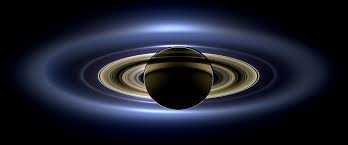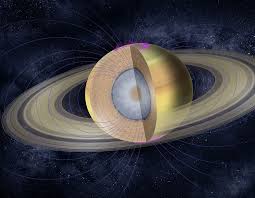
Saturn and Its Rings: A Majestic Wonder of the Solar System
Saturn, the sixth planet from the Sun, is one of the most fascinating and visually striking bodies in our solar system. Known for its stunning system of rings, Saturn has captivated astronomers and space enthusiasts for centuries. In this blog post, we will delve into the details of Saturn and explore the nature, composition, and mysteries of its iconic rings.
About Saturn
Saturn is a gas giant, second only to Jupiter in size. It has a diameter of about 116,460 kilometers (72,366 miles), making it nearly 9.5 times wider than Earth. Composed primarily of hydrogen and helium, Saturn lacks a solid surface, and its atmosphere features bands of clouds and storms, including the famous hexagonal storm at its north pole.
Saturn takes approximately 29.5 Earth years to complete one orbit around the Sun and has a rapid rotation period of about 10.7 hours, which causes it to have an oblate shape — it is noticeably flattened at the poles and bulging at the equator.
The Rings of Saturn
Saturn’s ring system is the most extensive and complex in the solar system. While other gas giants like Jupiter, Uranus, and Neptune also have rings, none are as bright or as large as Saturn’s. The rings extend outwards from the planet for thousands of kilometers but are surprisingly thin, often only about 10 meters thick.
Composition
The rings are made up mostly of countless particles of ice and rock, ranging in size from tiny dust grains to chunks as large as mountains. These particles reflect sunlight, which is why the rings shine so brightly when viewed from Earth or spacecraft.
Structure
Saturn’s rings are divided into several major sections, named alphabetically in the order of their discovery: A, B, C, D, E, F, and G rings. The brightest and most massive are the A and B rings, separated by the Cassini Division, a dark gap caused by gravitational resonance with one of Saturn’s moons, Mimas.
The F ring, located just outside the A ring, is thin and braided, shaped by the gravitational influence of nearby “shepherd moons” Prometheus and Pandora, which help maintain its structure.
Origin and Age
The origin of Saturn’s rings is still a topic of scientific research and debate. Some theories suggest that the rings formed from the remnants of a destroyed moon or comet that ventured too close to Saturn and was torn apart by tidal forces. Others propose that the rings are leftover material from the early solar system that never coalesced into a moon.
Recent studies estimate that the rings may be relatively young, perhaps only 100 million years old, though this is still being investigated.
Scientific Exploration
Saturn and its rings have been studied extensively through telescopes and spacecraft missions, including Pioneer 11, Voyager 1 and 2, and most notably, the Cassini-Huygens mission, which orbited Saturn from 2004 to 2017. Cassini provided unprecedented close-up images and data, revealing intricate details about the rings’ structure, composition, and dynamics.
Conclusion
Saturn’s rings remain one of the most beautiful and intriguing features in our solar system. Their vastness, complexity, and shimmering appearance continue to inspire curiosity and wonder. As technology advances and future missions are planned, we can look forward to uncovering even more secrets about this magnificent planetary system. Whether viewed through a telescope or captured by a spacecraft, Saturn and its rings offer a spectacular glimpse into the dynamic and diverse nature of our cosmic neighborhood.


Leave a Reply